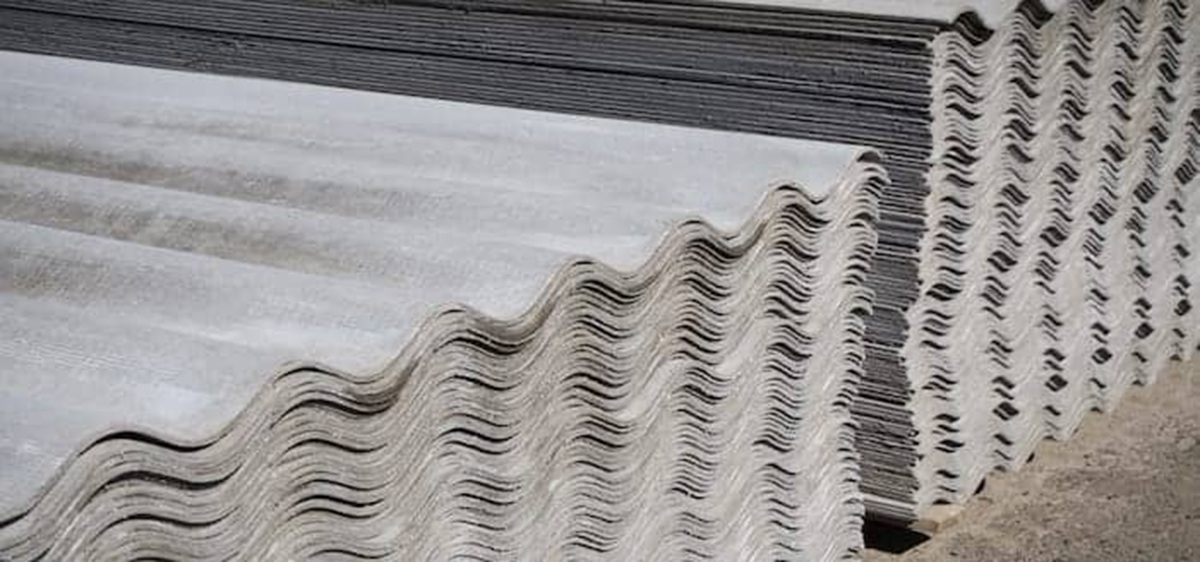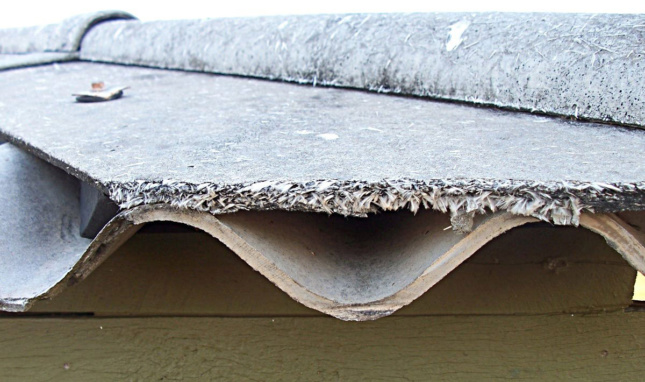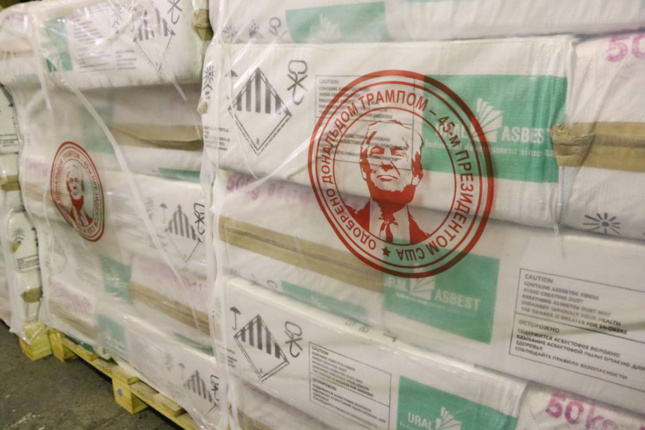Neemt
niet weg dat men ook asbest weer mag gebruiken voor dakbedekking en
de restricties zullen in de praktijk vrijwel niet tot verboden op het
gebruik van asbest leiden.....
Hoe
is 't mogelijk mensen..??!!! Een overheidsorgaan dat een stof toestaat waarvoor bij wijze van spreken kilometers aan bewijzen liggen dat het zwaar kankerverwekkend is...... Ach ja, zoals bij ons heel vaak de centen voorgaan op de volksgezondheid, is het in de VS een 'nationale sport' om de producten van bedrijven toe te staan die schadelijk zijn voor de volksgezondheid...... (men is zelfs bezig om de etikettering van deze stoffen niet langer verplicht te stellen, dan wel te alsnog te verplichten.....) E.e.a. blijkt ook weer uit het hieronder opgenomen artikel van Sydney Franklin dat werd gepubliceerd op National News Product Technology. Jaarlijks overlijden alleen in de VS al 40.000 mensen aan de gevolgen van asbestkanker (ook wel mesothelioom genoemd).....
Moet je nagaan dat er in Washington al vanaf begin vorig jaar een peperdure EU lobbyclub zit, die het liefst vandaag nog het TTIP verdrag getekend wil hebben..... Als Trump al geneigd zou zijn dit te doen, is het zeker, dat ook fabrieken die in hun producten asbest hebben verwerkt, deze producten mogen gaan verkopen in de EU, immers Trump heeft alleen oog voor de belangen van VS bedrijven.........
Moet je nagaan dat er in Washington al vanaf begin vorig jaar een peperdure EU lobbyclub zit, die het liefst vandaag nog het TTIP verdrag getekend wil hebben..... Als Trump al geneigd zou zijn dit te doen, is het zeker, dat ook fabrieken die in hun producten asbest hebben verwerkt, deze producten mogen gaan verkopen in de EU, immers Trump heeft alleen oog voor de belangen van VS bedrijven.........
EPA is now allowing asbestos back into manufacturing
By SYDNEY
FRANKLIN • August
6, 2018

The
U.S. Environmental Protection Agency has enacted a SNUR (Significant
New Rule) allowing companies to use new asbestos-containing products
on a case-by-case basis. (Courtesy Mesothelioma + Asbestos Awareness
Center)
One
of the most dangerous construction-related carcinogens is now legally
allowed back into U.S. manufacturing under a new rule by the
Environmental Protection Agency (EPA). Fast
Company recently
reported that on June 1, the EPA authorized a “SNUR” (Significant
New Use Rule) which allows new products containing asbestos to be
created on a case-by-case basis.
According
to environmental advocates, this new rule gives chemical companies
the upper hand in creating new uses for harmful products in the
United States. In May, the EPA released
a report detailing
its new framework for evaluating the risk of its top prioritized
substances. The report states that the agency will no longer consider
the effect or presence of substances in the air, ground, or water in
its risk assessments.
This
news comes after the EPA reviewed its first batch of 10 chemicals
under the 2016 amendment to the 1976 Toxic Substances Control Act
(TSCA), which requires the agency to continually reevaluate hundreds
of potentially toxic chemicals in lieu of removing them from the
market or placing new restrictions on their use. The SNUR greenlights
companies to use toxic chemicals like asbestos without consideration
about how they will endanger people who are indirectly in contact
with them.
Asbestos
was widely used in building insulation up until it was banned in most
countries in the 1970s. The U.S. is one of the only nations in the
world that has placed significant restrictions on the substance
without banning it completely. The Asbestos
Disease Awareness Organization (ADAO) revealed
in April that asbestos-related deaths now total nearly 40,000
annually, with lung cancer and mesothelioma being the most common
illnesses in association with the toxin. That number could rise if
new asbestos-containing products make their way into new buildings.

Asbestos
poses a major health risk for everyone who comes into contact with
it, both directly and indirectly. (Courtesy OSHA Safety Manual)
Healthy
Building Network (HBN),
an environmental advocacy group, told Fast
Company that
the fibrous material poses a major health risk for everyone exposed
to it, including those who mine it, those who handle it in industrial
facilities, as well as people near or inside renovation and
construction projects where it’s being used. HBN’s Board
President Bill Walsh said that the chlor-alkali industry is the only
industry in the country that still uses asbestos, reportedly
importing about 480 tons of the carcinogen each year from Russia and
Brazil.
Walsh
pointed out that chlorine-based plastics are commonly found in
building-product materials and that “virtually all” asbestos in
the U.S. is used in the industrial process to make chlorine. This
includes PVC and vinyl plastics, which is largely found in the
creation of pipes, tiles, flooring, adhesives, paints, and roofing
products.
As
the world’s largest exporter of asbestos, the Russian
company Uralasbest operates
an enormous open mine nearly half
the size of Manhattanin
a mountainous town 900 miles northeast of Moscow, according to the
Center for Public Integrity. The company has support from the
government and President Vladimir Putin, even though their economic
success exposes the local residents to major health risks. Once
referred to as “the dying city,” Asbest’s residents have
reported the carcinogenic dust is often found as a thick film over
garden vegetables, laundry lines, and even on the floors of their
homes.

Uralasbest,
a Russian mining company and the world’s largest supplier of
asbestos, posted a photo in June of President Trump’s face as a
seal on their shipping pallets. (Via the Uralasbest company Facebook
Page)
Earlier
last month, The
Washington Post noted
that the Environmental
Working Group (EWG)
and the ADAO had discovered a controversial post on Uralasbest’s
Facebook page showing
photos of company pallets stamped with a seal of U.S. President
Donald Trump’s face. Trump has long been vocal about his
skepticism on the harmful effects of asbestos, citing in his 1997
book, The
Art of the Comeback,
that anti-asbestos efforts were “led by the mob.” In 2012,
he tweeted that
the World Trade Center might not have burned had the fire-retardant
material not been removed from the towers. It’s estimated that
400 tons of asbestos fiber went into the structures before the
developers stopped it from being used further in 1971.
Asbestos,
while already legal for some uses, has not been as widely used in
U.S. construction since nearly 60 countries forbid it from use over
40 years ago. Though the EPA is now easing its regulations against
integrating the harmful toxin and others like it under the Trump
administration, it will largely be the responsibility of local and
state governments, as well as companies and informed consumers to
counter these new federal moves. Walsh says it’s up to sustainable
building-product manufacturers and ultimately, architects to pressure
the market.
“Architects
really set the pace of design, in terms of aesthetics and materials
that we like,” he said. “If they start to incorporate
health-based criteria into their palette, it could really have an
influence on what the manufacturers produce.”
The
EPA told The
Washington Post it will
conduct further studies on the first 10 chemicals under the amended
TSCA and final risk evaluations will published in December 2019.
